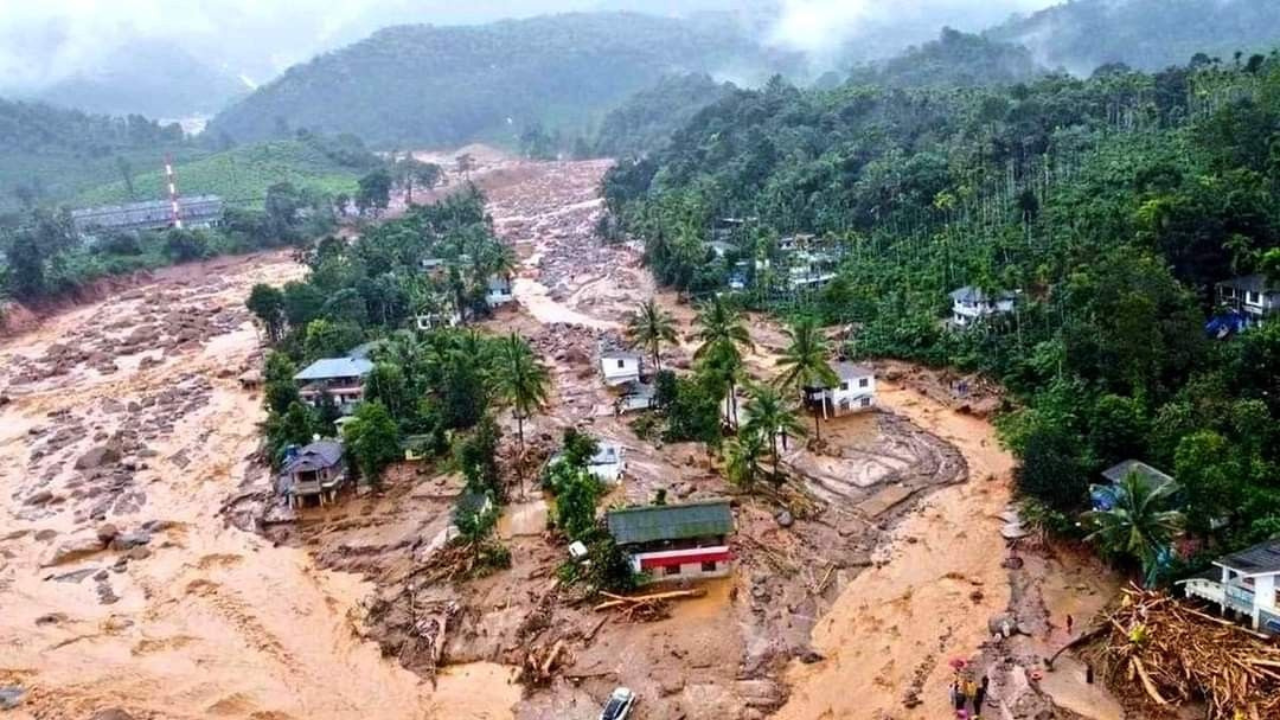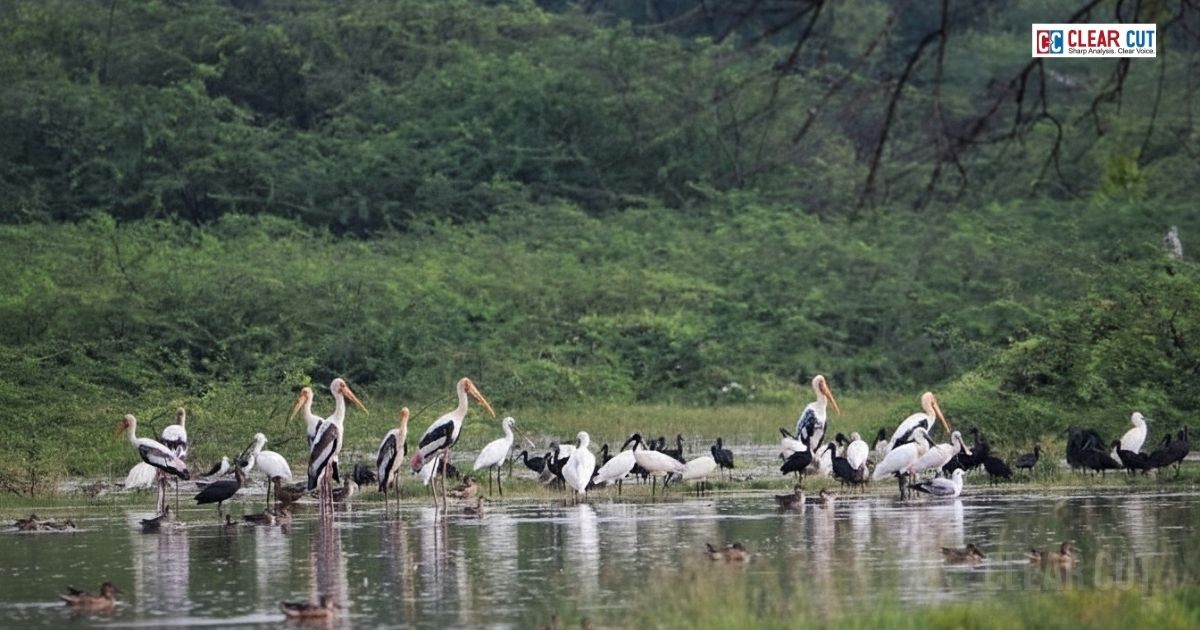Photo Credit : Internet
Clear Cut Climate Desk
New Delhi, UPDATED: Sep 02, 2025 04:49 IST
Written By: Antara Mrinal
Change has always been a part of September. Meteorological autumn in the Northern Hemisphere starts on September 1st, bringing with it lower temperatures, shorter days, and a slowing down of natural cycle. The season, however, does not feel quite the same in 2025 when India is under its September skies.
We can no longer predict the patterns of autumn across the subcontinent. September, which is considered the month of retreating monsoon, a season of ripened paddy, green fields and harvest festivals ahead, has deceived the farmers by changing its spell into alternating dry and deluges. Autumn has become blurred, stretched and stolen by climate crisis.
The Shifting Monsoon
India has witnessed delayed arrival of monsoon in some states, cloudburst in the Himalayas and scarce rainfall in central India. Floods washed away the farmlands of Bihar and Jharkhand in August, while Maharashtra stared helplessly at the desiccated, cracked earth. By September, when rains should have narrowed down into gentle showers, the Himalayan states witnessed profound downpours, triggering landslides and large-scale denudation.
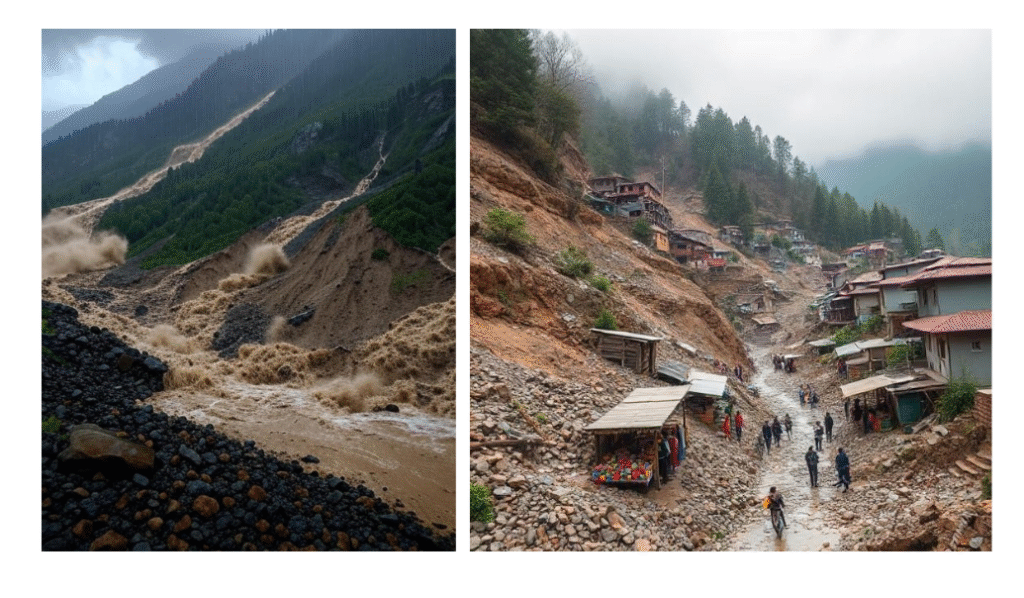
Landslides triggered by flash floods in the Himalayas expose the region’s growing climate vulnerability. It swallows homes, markets, sometimes even the entire towns.
Crops Caught in Transition
Meteorological autumn no longer ushers in gentle stability, it carries the anxiety of both excess and scarcity. The rhythm of the monsoon which was once a dependable clock for agriculture has now become vague.
Autumn is usually the season of kharif crops – rice, pulses, maize and oilseeds. These are supposed to reach maturity by this season, anticipating a global harvest. But the climate disruptions are rewriting this narrative. Paddy fields in Punjab and Haryana faced prolonged heatwaves in July, reducing grain yield and quality. In Odisha and West Bengal, erratic rains drowned young samplings which forced farmers to replant twice, resulting in exhausting their savings. Telangana expected steady rains but faced alternating dry spells and sudden deluges, which damaged the cotton flower buds. Instead of celebrating September for harvest, the farmers waited in fear of what will be left at the end of it all.
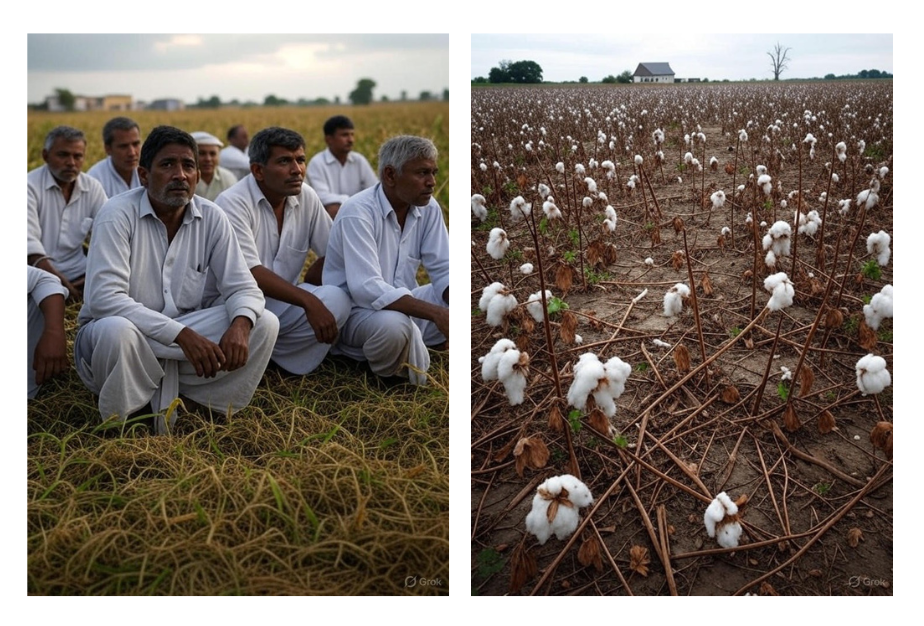
Growing climate crisis is not about merely degrees plotted on a graph. The final price is paid by the farmers who exhaust their entire years into hoping for a good harvest.
Not only this, the anxiety is also mirrored in India’s food prices. Tomato and anion prices surged after crop losses this year. This reminds us that climate change is not just a scientific reality, it sits on our kitchen tables.
Autumn Disasters
September skies now carry the weight of disasters in India. Once uncommon during this times, cyclone have increased their frequency in the Bay of Bengal. Storms that wreak havoc on coastal Odisha and Andhra Pradesh are fueled by the unpredictable interaction of retreating monsoon winds with rising waters.
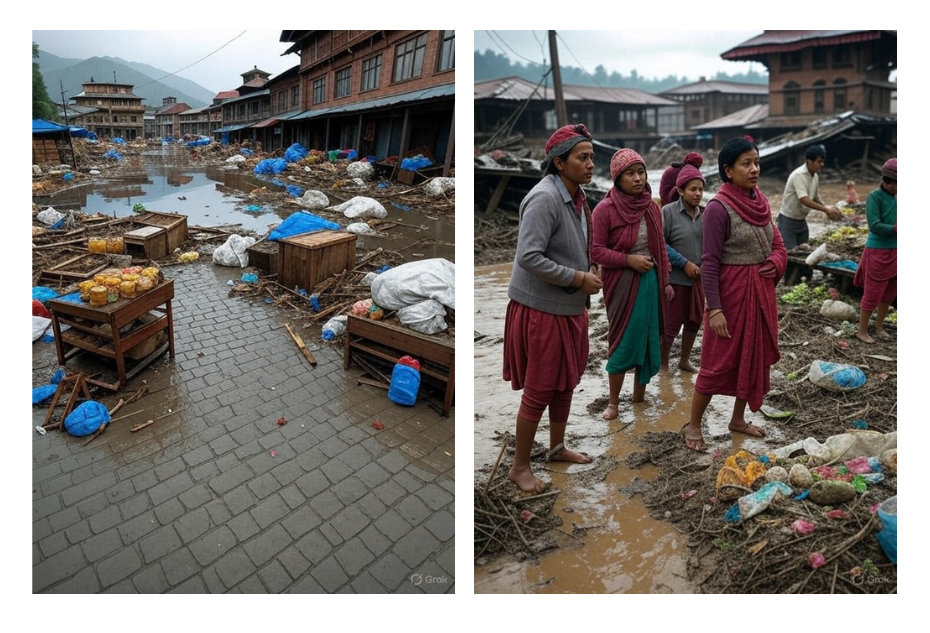
Drowned markets and devastated sellers. Climate crisis engulfs everyone.
Flash floods have raced through valleys in the north after glaciers are melting at previously unprecedented speeds. There are landslides and overflowing torrents in place of the Himalayan autumn chill. For mountain communities, this is more of survival than just an environmental concern.
The Human Side of Seasons
Climate change is often spoken of in numbers. Degrees of warming, millimetres of rainfall, hectares of crop loss. But behind each statistic are human stories. Whether it’s the elderly woman in Rajasthan who now has to walk a greater distance because wells dried up too soon, or the child in Assam who is unable to go to school because the classroom is flooded.
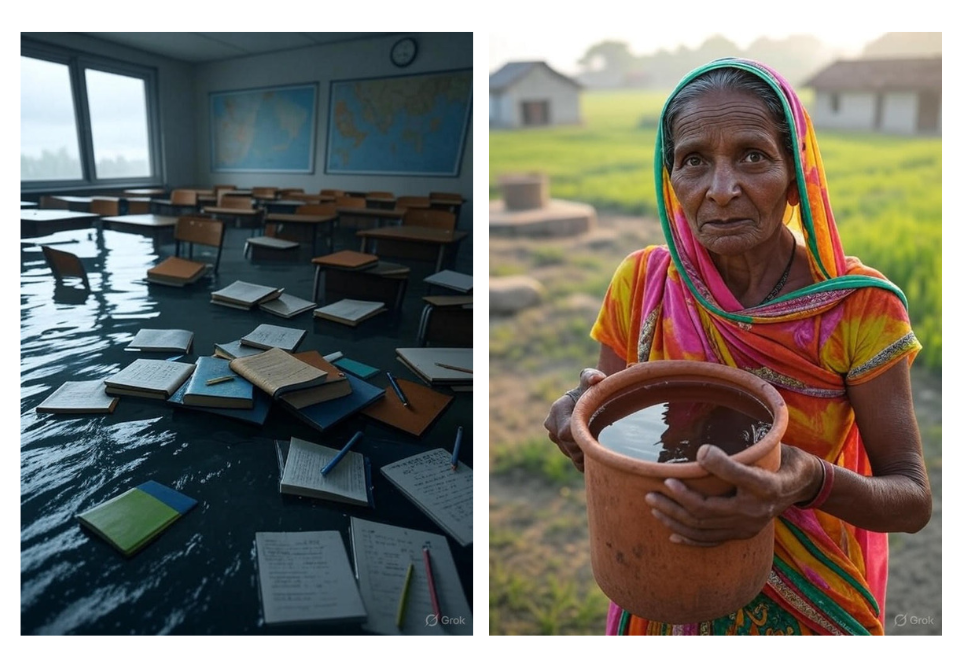
For a large sub-continent like India with extreme physiographic divisions, it experiences scarcity and extremity during climate change too.
Once poetic with its promise of harvest and festivals, autumn today is plagued by uncertainties. It now reminds us that climate change is no longer a distant threat but it is here, reshaping seasons before our eyes.
The Crop Ledger in 2025
India, with its vast population dependent on agriculture, cannot afford to ignore these shifting patterns. In Sawai Madhopur, 40% of guava orchards were destroyed, inflicting a total loss of ₹4 crore on local farmers (TOI). The instability of climate is also inflating staple prices. For perishables like tomatoes, onions and potatoes, inflation soared. Reserve Bank of India (RBI) analysis hinted 1.24 percentage points increase in vegetable inflation due to changes in rainfall, while 1.3 percentage points increase due to temperature changes (TOI). Cotton production went down by 7% due to flood damage (WTW). Sugarcane sowing in Gujarat fell by 15% impacted by flooding and a spike in pests (TOI).
The Cost Paid By Human Lives
Accelerated melting heightened the danger of glacial lake outburst floods escalating threats in mountainous regions. Between January and August 2025, 13 Himalayan states and union territories saw at least one disaster per day, resulting in 632 deaths as per government data analyzed by Down to Earth. Kishtwar district cloudburst and flashflood in Jammnu & Kashmir claimed at least 67+ lives, 300+ injuries with over 200+ people missing. Pilgrims on the Machail Mata Yatra route severely affected. The states also went through infrastructure damages which exceeded ₹1,714 crore (The Savera Times).
A fatal and unrelenting string of crop losses, natural disasters, and economic losses in 2025 highlights the critical need for early warning systems, adaptation, climate resilience, and sustainable farming practices.


